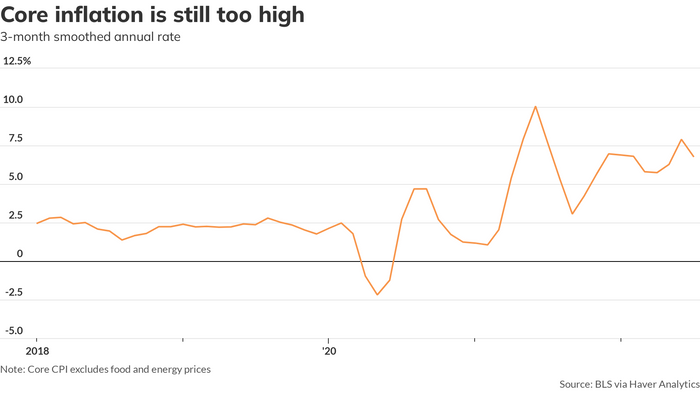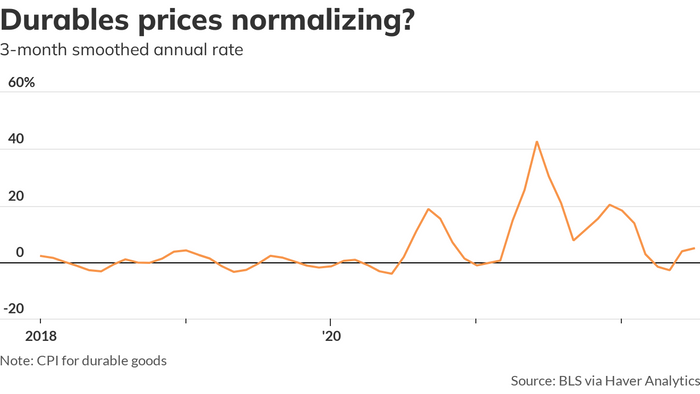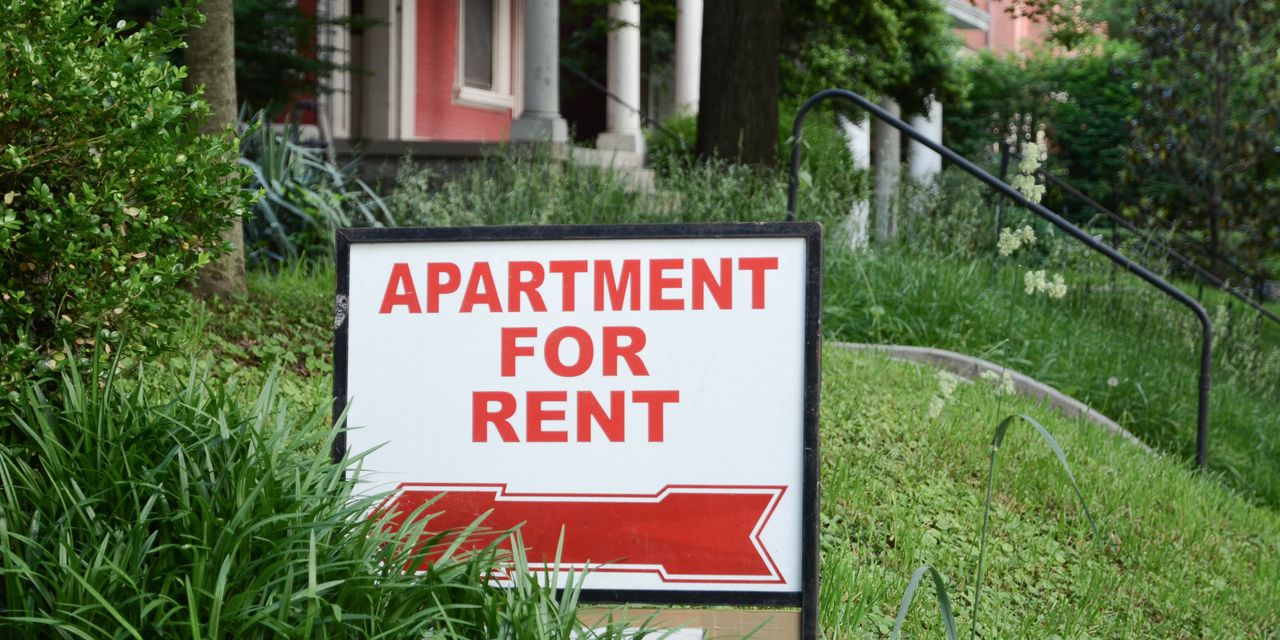There was no inflation in July, the government said Wednesday. That’s great news.
But let’s not get too far ahead of ourselves. It’s not time to break out the champagne. Inflation isn’t whipped yet. Indeed, it’s likely to bedevil us for at least another year or two because rents show little sign of moderating.
In July, plunging gasoline prices
RB00,
offset big increases in prices for food and shelter. As a result, the consumer price index was unchanged for the month. The core CPI (which excludes those volatile food and energy prices) rose just 0.3%, largely because rents kept going up, although at a slightly slower pace than in June.

MarketWatch
It’s never wise to put too much stock in one month’s data. It’s good to take a longer view but not so long that you miss the turning points. Over the past three months — from May through July — the core CPI rose at a 6.8% annual pace. That’s better than the 7.9% pace from April through June, but it’s still terrible. The core CPI is likely to remain far above the official 2% target for quite a while.
Sticky prices
Consumers watch food and gasoline prices closely because the prices of the things they buy every week change so frequently. But economists also pay attention to the prices that don’t change every day, such as shelter, durable goods and services such as health care and insurance.
If you want to know where inflation is going over the medium term, the price of shelter is the big one to watch. Shelter accounts for nearly a third of the CPI, and shelter prices are very sticky. What I mean by that is that rents don’t change very often, but when they start rising, they keep rising.

MarketWatch
Rents have a lot of upward momentum right now, which means the CPI has a lot of upward momentum.
Now read this: ‘We feel like it’s rent gouging’: Renters meet with Biden administration officials to decry steep increases by landlords
House prices have risen more than 20% in the past year, but it takes 12 to 18 months for changes in home prices to show up in the CPI data, which are based on observations of rents, not sales prices.
For now, rents are on fire. Over the past three months, the CPI for shelter has risen at a 7.3% annualized rate, the fastest increase since 1990. Ultimately, rents should return to a more normal 3%-ish pace, but the immediate impact of the Federal Reserve’s rate increases
FF00,
is pushing rents higher as would-be home buyers are priced out of ownership and forced to compete with other renters for a tight supply of homes for rent.
Some good news
Fortunately, inflation for durable goods — such as motor vehicles, appliances and TVs — is moderating as supply chains slowly get untangled.

MarketWatch
Prices of durables had fallen by about 1% a year for nearly 25 years as production moved to lower-cost countries. But the pandemic broke that trend. In June 2021, prices of durables were rising at more than a 40% annual rate. Now they’ve eased to a 4.8% pace. It’s not far-fetched to think that prices of durables might rise slowly or even decline slightly as supply chain problems ease.
Related story: America’s biggest ports are still contending with record volume, indicating the country’s supply chain woes are far from over
In that sense, inflation may become more normal going forward.
Food and energy prices are the wild cards that are difficult, if not impossible, to predict. Food and energy prices are swayed by weather, geopolitical events and supply-chain issues. Energy prices may be flat in the months ahead, but we’re only one hurricane away from $5 gasoline. Geopolitical risks are rising in the Taiwan Strait as well.
Rex Nutting is a columnist for MarketWatch who has been writing about the economy for more than 25 years.
